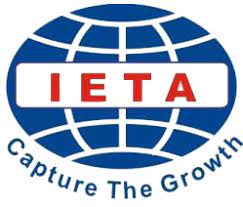JAVANESE ADJECTIVE INTENSIFIER DIPHTHONG IN PONOROGO: GENERATIVE TRANSFORMATIONAL PHONOLOGY STUDY
 ), Moh Khoirul Anam(2),
), Moh Khoirul Anam(2), (1) Diponegoro University
(2) Diponegoro University
 Corresponding Author
Corresponding Author
Copyright (c) 2020 Lingua Didaktika: Jurnal Bahasa dan Pembelajaran Bahasa
DOI : https://doi.org/10.24036/ld.v13i2.106750
Full Text:
 Language : en
Language : en
Abstract
Intensifying words commonly use word like very, absolutely, etc. However, Javanese people not only use the words but also change the sound of the word. This study aims to examine the diphthong pattern of the adjective intensifier in Javanese in Ponorogo. The pattern was examined using the Transformational Generative Phonology to describe the phonological rules of adjective intensifiers. The number of the data was 65 of the most commonly used adjective words. When collecting data, the techniques used were random sampling by taking 35 informants from five districts in Ponorogo. The literature and note-taking technique functions to document the speech of the speaker, while to analyze the data the distributional method is used. The results of the study found that the patterns of diphthong sound are [ua], [uə], [ue], [uɛ], [uo], [uɔ], [ui] and [ɔu]. The diphthongs are divided into three types based on the classification of basic vocal sounds that undergo phonological changes, namely ascending, centering and descending. The vowel phoneme /u/ becomes the underlying to express the 'intensifying' nature into all the vowels afterwards, while the allophonic vowel [ɔ] is more accepted as variations of the phoneme /u/ to 'intensify' when appearing before the sound [u] because they have the distinctive features [α back] and [β round]. This study also revealed that sound insertion happened only in the first syllable of a word.
Keywords: Javanese Language, transformational generative, diphtong, adjective
Keywords
References
Bloomfield, L., & Barnhart, C. L. (1961). Let's read: A linguistic approach. Michigan: Wayne State University Press.
Brown, E. L., & Cortés-Torres, M. (2013). Purto Rican intensifiersː Bien/Muy variables. In A. M. Carvalho, & s. Beaudrie (Ed.), Proceedings of the 6th Workshop on Spanish (pp. 11-19). Cascadilla Proceedings Project.
Chomsky, N., & Halle, M. (1968). The Sound Pattern of English. New York: Harper & Row.
Csonka, V. (2016). Compounding, preposed adjective and intensifiers in Scottish Gaelic. PhD Thesis, University of Glasgow, School of Humanities.
Hayes, B., Kirchner, R., & Steriade, D. (2004). Phonetically Based Phonology. Cambridge & New York: Cambridge University Press.
Ito, R., & tagliamonte, S. (2003). Well weird, right dodgy, very strange, really coolː layering and recycling in English intensifiers. Language in Society, 257-279. doi:10.1017/S0047404503322055
Kanwit, M., Elias, V., & Clay, R. (2018). Acquiring intensifier variation abroadː Exploring muy and bien in Spain and Mexico. Foreign Language Annals(51), 455–471. doi:10.1111/flan.12335
Koentjaraningrat. (2004). Manusia dan Kebudayaan di Indonesia. Jakarta: PT. Rineka Cipta.
Kridalaksana, H. (2008). Kamus Linguistik. Jakarta: Gramedia Pustaka Utama.
Nafisah, S. (2017). Proses fonologis dan pengkaidahannya dalam kajian fonologi generatif. Deiksis, 9(1), 70-78. doi: http://dx.doi.org/10.30998/deiksis.v9i01. 940
Odden, D. (2005). Introducing Phonology. New York: Cambridge University Press.
Pintarić, A. P., & Frleta, Z. (2014). Upwards intensifiers in the English, German and Croatian language. Journal for Foreign Languages, 31-48. doi:10.4312/vestnik.6.31-48
Samarin, W. J. (1988). Ilmu Bahasa Lapangan. Yogyakarta: Kanisius.
Sardabi, N., & Afghari, A. (2015). Gender difference in the use of intensifiers. Journal of Applied Linguistics and Language Research, 2(7), 203-213. Retrieved from http://jallr.com/index.php/JALLR/article/view/174/pdf174
Schane, A. S. (1992). Fonologi Generatif. (K. Gunawan, Trans.) Jakarta: Summer Institute of Linguistic.
Sojda, S. (2019). Adverbial intensifiers in contemporary Polish and Slovak. Jazykovedný časopis, 70(1), 55-72. doi:10.2478/jazcas-2019-0040
Subroto, e. a. (1991). Tata bahasa deskriptif bahasa Jawa. Jakarta: Departemen Pendidikan dan Kebudayaan.
Sudaryanto. (1991). Tata bahasa baku bahasa Jawa. Yogyakarta: Dutawacana University Press.
Sudaryanto. (2015). Metode dan aneka teknik analisis bahasa: Pengantar penelitian wahana kebudayaan secara linguistis. Yogyakarta: Duta Wacana University Press.
Thomas, J. (1995). Meaning in interaction: An introduction to pragmatics. New York: Longman.
Verhaar, J. W. (1996). Asas-asas linguistik umum. Yogyakarta: Gadjah Mada University Press.
 Article Metrics
Article Metrics
 Abstract Views : 753 times
Abstract Views : 753 times
 PDF Downloaded : 243 times
PDF Downloaded : 243 times
Refbacks
- impian789
- Kiano88
- impian789
- impian789
- rajaburma88
- impian789
- impian789
- impian789
- impian789
- impian789
- gali77
- Kiano88
- kencana69
- kencana69
- gali77
- Kiano88
- Kiano88
- KIANO88
- impian789
- rajaburma88
- impian789
- KIANO88
- impian789
- impian789
Copyright (c) 2020 Lingua Didaktika: Jurnal Bahasa dan Pembelajaran Bahasa

This work is licensed under a Creative Commons Attribution-NonCommercial 4.0 International License.









